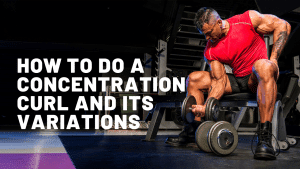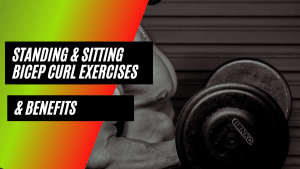How to do a proper hammer curl and the muscles worked
For many guys, sculpting killer biceps like Thor’s is the ultimate goal, which is totally fine because while getting those is no easy feat, it is also not an impossible one. You may even be one of those guys and that is completely understandable because who doesn’t want ripped arms?
So you go to the gym and head straight to where the weights are and start doing countless reps of bicep curls like there is no tomorrow. You do this for the next few days that turn into weeks that turn into months, but still no peak in sight.
Now, you might start asking yourself what you could possibly be missing. Well, what does Thor have that you do not? Then the realization finally hits you. Mjolnir! That is right, Thor has a hammer and you do not.
But fret not because your go-to gym likely has it. Although in your case, you will not be using an actual hammer for the curl; instead, you will be doing it. And your weapon of choice—or should we say weapons?—is a pair of good ol’ dumbbells.
What is a hammer curl?
The hammer curl is basically just a variation of the bicep curl. Same movement, same biceps, same dumbbells—the only difference is the way you are holding them. The hammer curl got its name from the hammer-like grip on the dumbbell when performing the exercise, but the name is so much more than that because aside from the grip, the movement will certainly hammer your biceps as well.
While the hammer curl and bicep curl look very similar at first glance, they target different parts of the arm. The underhand grip employed during a bicep curl focuses more on the bicep peak, while the hammer-like grip in a hammer curl focuses more on the thickness and overall strength of the entire arm.
But enough blabbering. Let’s get hammering!
How to hammer curl the right way
Hammer curls are a relatively simple exercise but there is more to them than just holding the dumbbells at a 90-degree angle.
- Begin the exercise by sitting on a bench with the back pad in an upright position, dumbbells ready at the sides. Hammer curls may also be done standing but to avoid swinging during the exercise, seated hammer curls are much preferred.
- Keep your elbows pinned to your sides and retract your shoulders to avoid recruiting the deltoids during the exercise.
- Get the dumbbells and grip them at the top end instead of the middle because the biceps are more isolated that way.
- Now that your arms are fully extended and your hands are in a neutral position facing each other, move the dumbbells in an upward motion until your thumbs are close to your shoulders.
- Pause in that position for a few seconds before lowering the dumbbells and returning to the starting position in a controlled manner.
- Repeat for at least 3 sets of 15 repetitions each.
Muscles worked by the hammer curl
In a hammer curl—or any other curl variation for that matter—the bicep is usually the center of attention. But contrary to popular belief, it is not just one huge muscle in the upper arm. When people say biceps, more often than not they are referring to the biceps brachii only, but there are actually two more muscles that make up the biceps: the brachialis and brachioradialis.
The former is located under the biceps while the latter runs from deep inside the center of your upper arm to the center of your forearm. With all these muscles working together, they become responsible for the flexion of the arm at the elbow.
Moreover, the neutral hammer-like grip of the hammer curl shifts most of the work from the biceps brachii to those two other biceps muscles, effectively building their strength.
In other words, strengthening both the brachialis and brachioradialis is just as crucial as specifically training the biceps brachii to get loaded guns.
Benefits of the hammer curl
More arm muscles targeted
Aside from the biceps, the hammer curl also builds grip, wrist, and forearm strength. This is because the forearm muscles work together with the brachialis and brachioradialis muscles to stabilize the arm and support the wrist while it is supinated.
Moreover, the hammer curl also reduces the risk of wrist and shoulder injuries and prepares the forearm for more advanced exercises.
Overall arm strength
While bicep curls develop taller peaks, hammer curls develop wider biceps that are more functional. Pair that with strengthened brachialis and brachioradialis muscles and you get arms that will give Thor a run for his money.
Hammer curl mistakes to avoid
Too much swaying
Excessive side-to-side movement of your torso during a hammer curl can be considered cheating because such motion takes the tension off of your arms and shifts it to your back and core muscles. This usually happens when the weight is too heavy which forces the body to compensate by swaying. What you can do to avoid this is to use a weight that is just heavy enough to give you resistance but not too light that it does not create any effect at all.
Curling too fast
Curling too fast will decrease your time under tension which determines how effective the curl will be. Ideally, the movement should be controlled throughout the exercise, with two seconds going up, one-second pause at the top of the movement, and then two seconds going down.
Weak grip
The last thing you want to do is to hold the dumbbells loosely. Instead, grab the handle as hard as you can and maintain that tension throughout the exercise.
Using momentum
This is a common mistake not just with hammer curls but with almost any exercise that involves weights. Many people use momentum to either lift the weight or to shorten the reps. As a result, the necessary muscles are not worked and they just exhausted themselves for nothing.
Incomplete range of motion
Speaking of shortening reps, an incomplete range of motion is another common mistake that occurs when you fail to fully stretch the arm out at the bottom of the movement. As a result, you do not get the full extension and you stop those few extra muscle fibers from working which is essential in developing the biceps. Moreover, you also fail to keep the elbows locked in place which is the ideal position when you reach the bottom of every rep.
Hammer curl variations
Incline hammer curls
This variation is performed the same way you would a regular seated hammer curl. But instead of sitting in an upright position, the bench should be inclined at a 45-degree angle to increase the range of motion. Moreover, putting yourself in that position also minimizes deltoid movement, providing more isolation on the brachialis and long head muscles.
Kettlebell hammer curls
This advanced variation of the hammer curl can be a bit more challenging, although it is still performed the same way you would a regular hammer curl. The only difference is the use of a kettlebell instead of a pair of regular dumbbells. With this exercise, you will improve not only your grip strength but also your shoulder stability.
Hammer curl vs. bicep curl: which is better?
It would be more ideal if both are incorporated into your arm workout routine. That way you will get the best of both worlds: massive peaks from bicep curls, wide and functional biceps from hammer curls.
The good thing about these two exercises is that both of them have plenty of variations you can perform depending on your needs, that way you can continue to do both without getting bored. You may even want to try using a cable machine or kettlebell to give your biceps some variety every once in a while.
Another piece of equipment that you can use to build your biceps, especially the short head, is the EZ bar. However, you cannot use this in a hammer curl since it is more appropriate for a bicep curl. To maximize the EZ bar, you may adjust your grip accordingly to target the different heads of the biceps: a narrower grip on the bar to build the short head, a wider grip to target the long head.
However, the hammer curl has more ability to build grip strength than the bicep curl. Such strength will prove useful once you start doing more advanced exercises like pull-ups and deadlifts. In addition to that, the hammer curl is also great for exhausting your muscles and promoting hypertrophy to build more muscle during recovery.
The bottom line is, no one is stopping you from doing both so just incorporate these two exercises in your arm workout routine for more optimal results. But while both of them are great exercises for the arms, you still need to perform more compound workouts to build overall strength and muscle throughout your body, not just the arms.
Eventually, you will be strong enough to do both hammer curls and bicep curls and you will have massive biceps to prove it. When that time comes, you will be worthy of picking up and curling heavier weights, just like how Thor is worthy of carrying his hammer.



